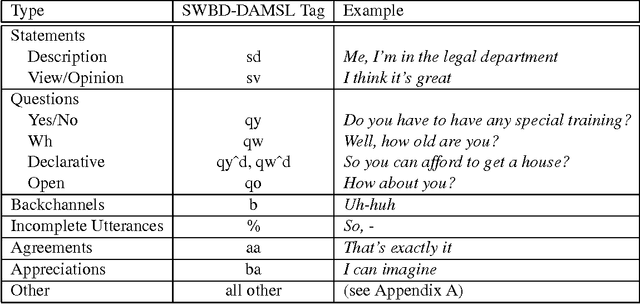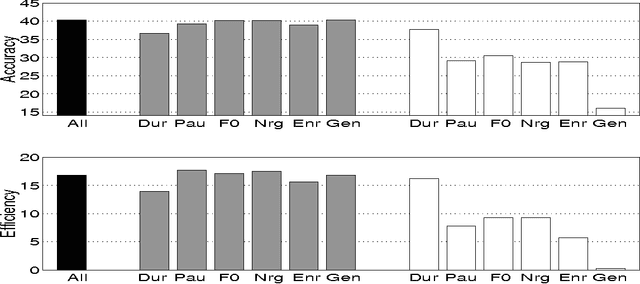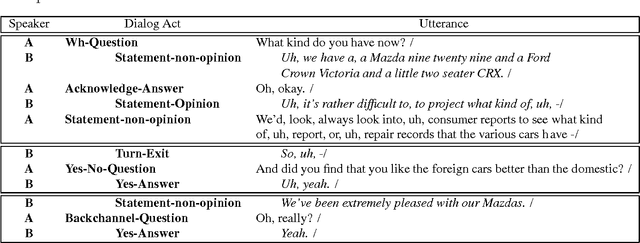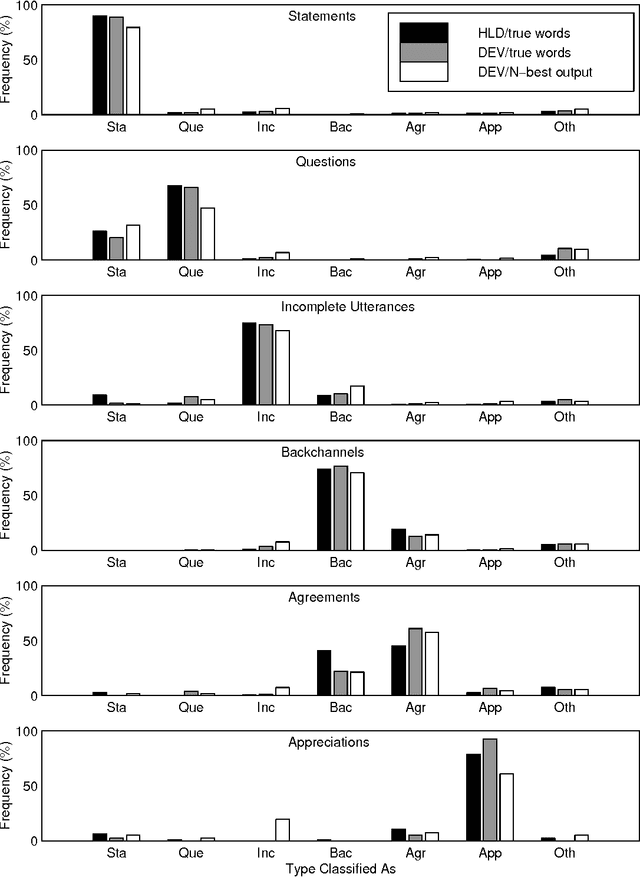C. Van Ess-Dykema
Dialogue Act Modeling for Automatic Tagging and Recognition of Conversational Speech
Oct 26, 2000Abstract:We describe a statistical approach for modeling dialogue acts in conversational speech, i.e., speech-act-like units such as Statement, Question, Backchannel, Agreement, Disagreement, and Apology. Our model detects and predicts dialogue acts based on lexical, collocational, and prosodic cues, as well as on the discourse coherence of the dialogue act sequence. The dialogue model is based on treating the discourse structure of a conversation as a hidden Markov model and the individual dialogue acts as observations emanating from the model states. Constraints on the likely sequence of dialogue acts are modeled via a dialogue act n-gram. The statistical dialogue grammar is combined with word n-grams, decision trees, and neural networks modeling the idiosyncratic lexical and prosodic manifestations of each dialogue act. We develop a probabilistic integration of speech recognition with dialogue modeling, to improve both speech recognition and dialogue act classification accuracy. Models are trained and evaluated using a large hand-labeled database of 1,155 conversations from the Switchboard corpus of spontaneous human-to-human telephone speech. We achieved good dialogue act labeling accuracy (65% based on errorful, automatically recognized words and prosody, and 71% based on word transcripts, compared to a chance baseline accuracy of 35% and human accuracy of 84%) and a small reduction in word recognition error.
* 35 pages, 5 figures. Changes in copy editing (note title spelling changed)
Can Prosody Aid the Automatic Classification of Dialog Acts in Conversational Speech?
Jun 11, 2000



Abstract:Identifying whether an utterance is a statement, question, greeting, and so forth is integral to effective automatic understanding of natural dialog. Little is known, however, about how such dialog acts (DAs) can be automatically classified in truly natural conversation. This study asks whether current approaches, which use mainly word information, could be improved by adding prosodic information. The study is based on more than 1000 conversations from the Switchboard corpus. DAs were hand-annotated, and prosodic features (duration, pause, F0, energy, and speaking rate) were automatically extracted for each DA. In training, decision trees based on these features were inferred; trees were then applied to unseen test data to evaluate performance. Performance was evaluated for prosody models alone, and after combining the prosody models with word information -- either from true words or from the output of an automatic speech recognizer. For an overall classification task, as well as three subtasks, prosody made significant contributions to classification. Feature-specific analyses further revealed that although canonical features (such as F0 for questions) were important, less obvious features could compensate if canonical features were removed. Finally, in each task, integrating the prosodic model with a DA-specific statistical language model improved performance over that of the language model alone, especially for the case of recognized words. Results suggest that DAs are redundantly marked in natural conversation, and that a variety of automatically extractable prosodic features could aid dialog processing in speech applications.
* 55 pages, 10 figures
 Add to Chrome
Add to Chrome Add to Firefox
Add to Firefox Add to Edge
Add to Edge